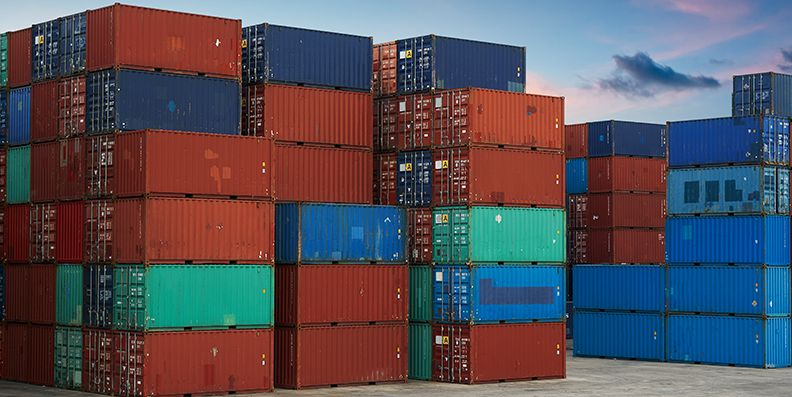Customer experiences – All companies have certain commitments from the delivery standpoint to their customers; these are either bound by expectations or contracts. Any supply chain deterioration resulting from an unexpected event leads to an overall decline in customer experience and satisfaction.


Blog

Solving Supply Chain’s Big Problems – Value Chain Visibility & Demand Matching
Reading Time: 7 minutes
Supply chains, despite enhanced planning and management, are not immune to exceptional, unforeseen events. While careful planning and increased integration of technology can help in mitigating the impact and shortening delays, they are nowhere near enough to deal with global problems like the one we currently face. The Covid-19 pandemic tested and broke even the most well-established supply chain processes. However, at the same time, the challenging times also left behind some clear learnings for the industry – the need for real-time data access is one of them.
Before we look at how to fix the problem, let’s understand the main supply chain challenges most organizations face –


Declining revenues and rising cost – demand changes due to unforeseen problems can lead to either a spike in consumer demands or forces suppliers/manufacturers to carry more inventory as demand drops. Both these situations lead to extra costs either through reducing revenues or increasing the cost of procurement through untested, new suppliers.

Pace of decision making – As an organizational supply chain starts spreading and becomes more global, it is observed that the speed of decision making decreases. This slow process reduces the ability of an organization to move quickly and decisively to counter problems.

Responsiveness – The overall built-in responsiveness to deal with outlier events is also a decisive factor that can affect the level of disruption.
On a deeper level, these challenges emerge from root causes such as –

Low visibility – organizations operate on application islands; there is no access to real-time and accurate data that cause supply chain disruptions. The overall end-to-end visibility is severally limited.

Data inconstancy – All stakeholders of a supply chain usually operate in their own organizational data silos. Within the organization, data is further segregated in application siloes. The same data is present in multiple areas, and the information doesn’t flow from one system to another. Furthermore, the definitions, granularity, and sequence vary from each organization to the other, and that makes it difficult for ALL of them to achieve a singular overview of the entire supply chain.

Exceptions – Supply chain processes are not designed to handle exceptions. Even now, the majority of data analytics is based on historical trends, which make it hard to incorporate and plan for exceptional events.
The Broader Agility Problem in Demand Supply Matching
The main issue – as highlighted by the Covid-19 supply chain collapse – is an imperfect demand-supply matching process, which affects retailers, suppliers/manufacturers as well as fulfillment and distribution part for the supply chain.
Demand signals that knows what your retailers need and how much you are going to sell are often delayed. It takes time to consolidate patterns and make them available. This forces suppliers to create inventory flexibility based on historical data, as this is as real-time it can be. However, despite these efforts, the execution still works in 4-8 weeks behind the actual event as suppliers or manufacturers need at least this much time to fulfill the inventory demand. If, during this time, the situation or the demand changes, it is impossible to fulfill it quickly. This ultimately leads to expensive delays and additional costs all across the supply chain.
Suppliers are trying to use more and more data and ML to optimize their processes, but disruptions like Covid-19 highlighted the core problem – If you can’t see real-time rise in demand, how can you expand your supply chain and fulfill the demand.
For example, during the pandemic, hospitals were struggling to cover PPE shortages, but the needed agility wasn’t built into the systems. The demand fluctuations were so high that the traditional supply chain wasn’t able to manage it. While there were suppliers that could fulfill the demand, but many of these were outside the traditional supply chain and couldn’t be brought on board quickly. In fact, many transactions were carried out using phones and spreadsheets, which made it difficult to track, monitor, or analyze inventory in a transparent manner. Even information like the amount of inventory, shipping state, and location of the material was hard to get in real-time.
Blockchain for Smarter and Resilient Supply Chains
Current processes and data infrastructure are siloed with each institution or application independently retaining duplicate data sets. This leads to expensive data reconciliation, time-consuming process breaks, and higher latency and operational overheads.
The solution is to enable a common source of truth within and between enterprises. A Blockchain-based solution that enhances data trust and maintains privacy will overcome the challenges elaborated above.
Putting all stakeholders on one secure platform will eliminate time-consuming and expensive data reconciliation, and enable new, shared business processes. All transactions can be tracked, from quote request to final delivery, from one portal. This includes shipping status as well. Working under one portal will also lead to data consistency in the long run and reduce the duplication of effort and time spent on party onboarding by different company ecosystems.
Moreover, a golden source of information built on the solid foundations of blockchain technology will also make the auditing process simpler. Information such as who is processing the contract, what equipment is entering the country, which country is it coming from, custom regulations, etc. can be funneled directly to regulatory bodies in a set format – ultimately reducing compliance work.
Innover built a Blockchain solution in record time to overcome medical supply shortage for hospitals during Covid-19. The mobile-friendly portal constructed an interconnected economic network that allowed businesses to seamlessly connect regardless of their individual underlying technology infrastructure.
The application used smart contracts deployed on a blockchain network to define data sharing and privacy at a granular level. It allowed sellers, buyers, shippers and other stakeholders of the ecosystem to interact on a common platform. Products and sellers were onboarded centrally, and buyers could raise quotations and place orders with them on one marketplace-like portal. The whole workflow and history (including cargo chain and delivery) are tracked and archived, which gives the users the added bonus of extracting business insights from the data too!
Get in touch with us to know how you can incorporate a similar tool in your ecosystem.



Leave a Reply